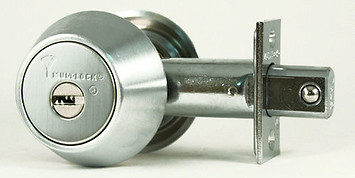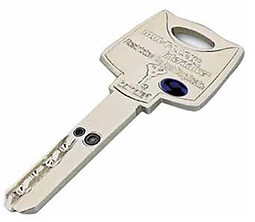
Standard-Security Vs. High-Security
There are two types of deadbolts that are most commonly used in America – both of which can be quickly unlocked by an intruder with no signs of forced-entry.
-
Standard (Pin) Lock – These locks, no matter how expensive, can technically be bumped or picked with no signs of forced entry.
This video will show how easy it is to unlock a standard deadbolt using a “bump key”:
To name some common deadbolt brands that are vulnerable to lock bumping: Baldwin, Defiant, Emtek, Kwikset, Schlage, Weiser and Weslock.

-
“Smart Key” Locks – These locks were designed to be re-keyed easily and are presented to consumers as “bump proof” locks. This is true, however, they are far from being secure! This Keyhole can be forced to turn within seconds with a strong metal object. This method can be very quiet and leave no signs of forced entry.
This video will show how easy it is to unlock a “Smart Key” deadbolt using a force tool:

Kwikset “Smart Key” Deadbolt (you can tell it is a “smart key” type by the tiny hole to the left of the keyhole)
High-Security Lock:
This deadbolt is pick and bump proof and is also drill and tamper resistant. It will take a whole lot of time and skill for an intruder to get through this lock! They will most likely just move on to an easier target.
Besides having a super-secure lock – you will also have the peace of mind knowing exactly how many copies of your key are out there. In order to make copies you will have to present your “code card”, which comes with the lock. This card has the cutting information needed in order to cut a proper copy of your key.

High Security Deadbolt – Pick, Bump and Tamper Resistant. Also provides “Key Control” which prevents unauthorized copies from being made. Don’t be intimidated by the “commercial” look – it comes in a variety of styles and finishes to work with any door!

High Security Key
